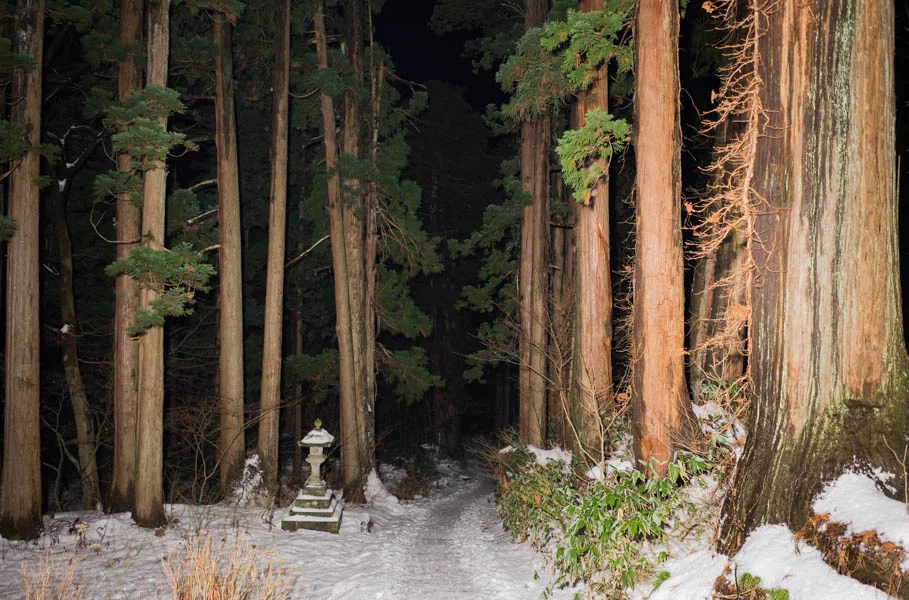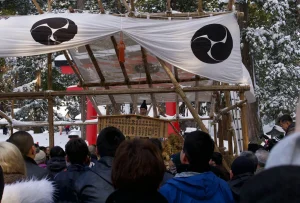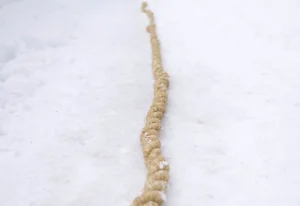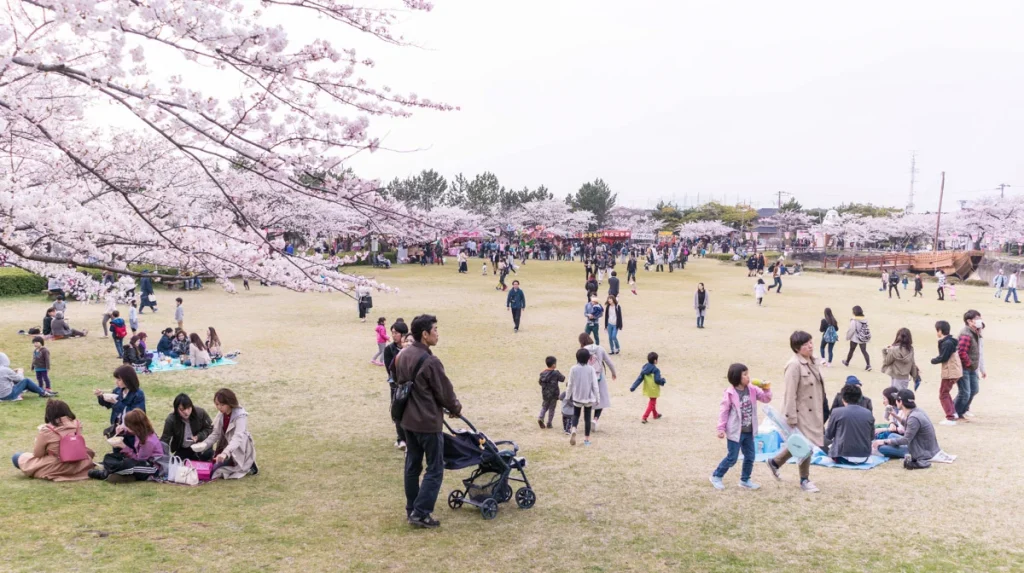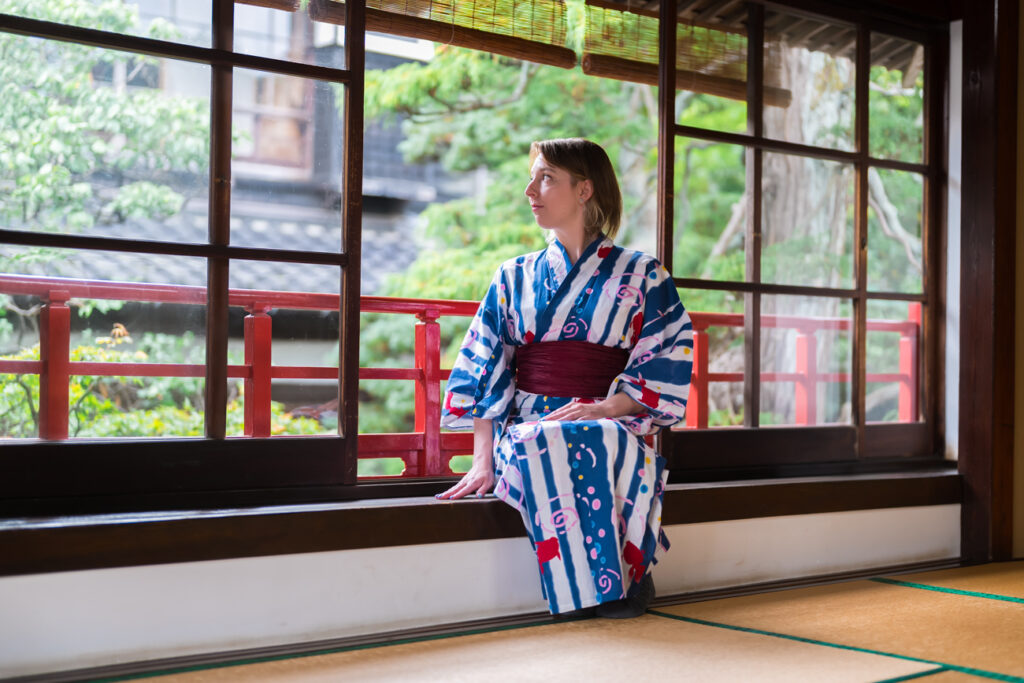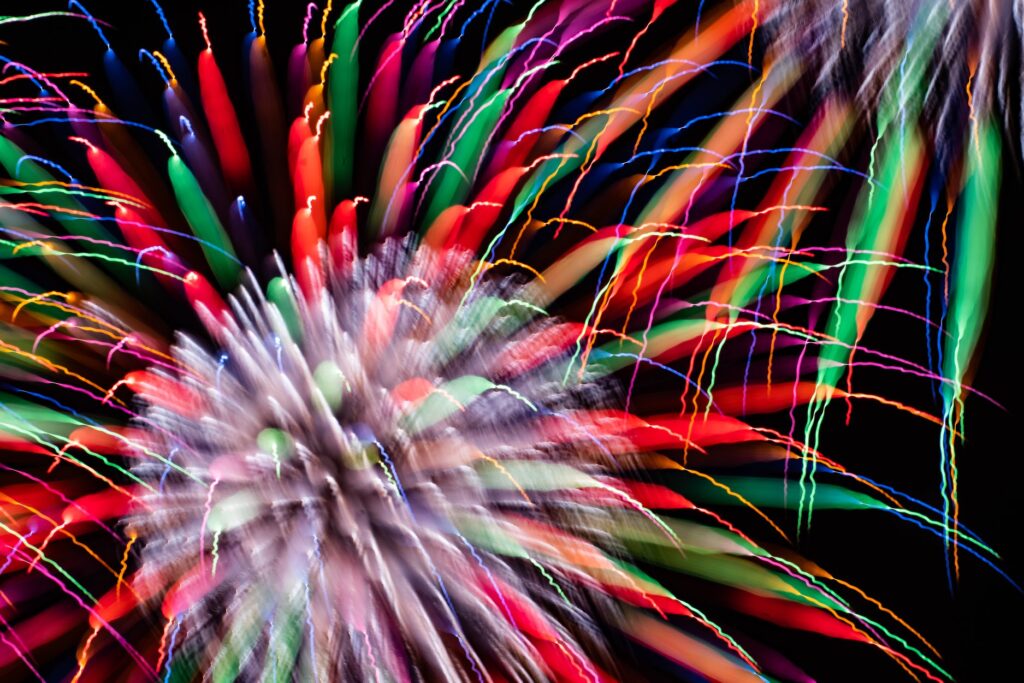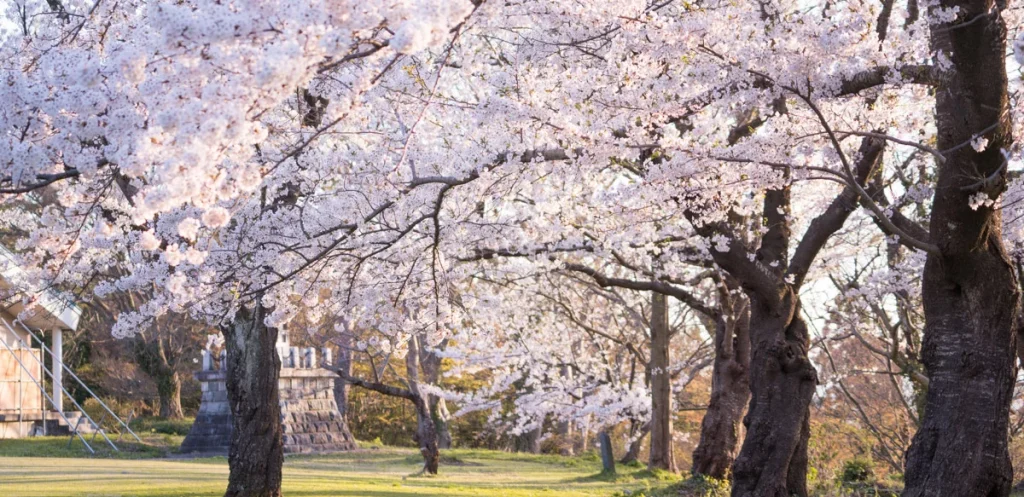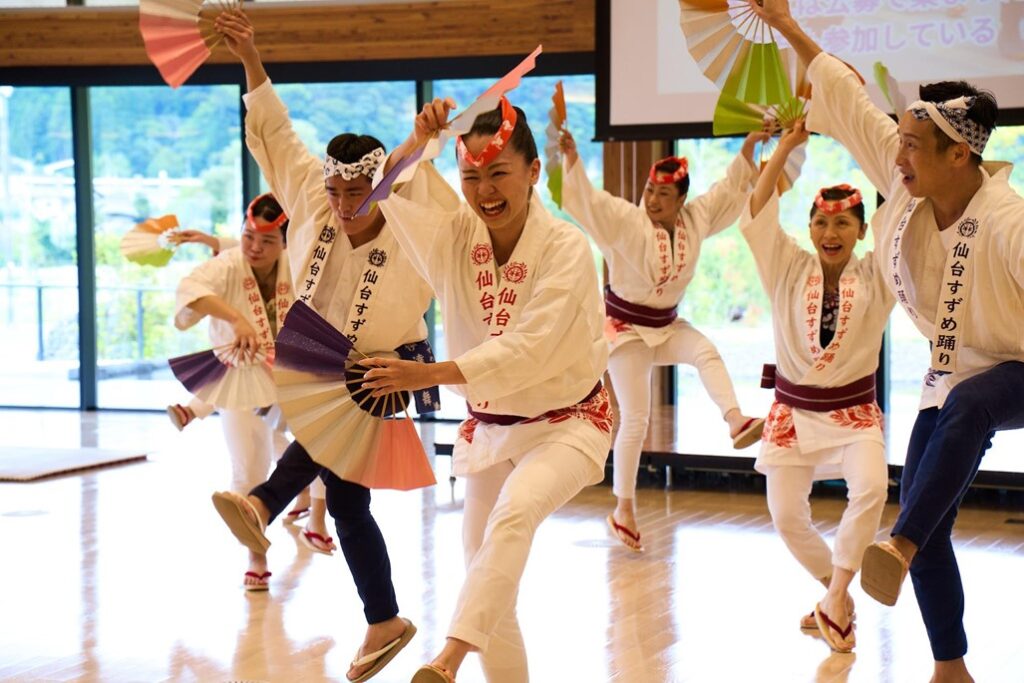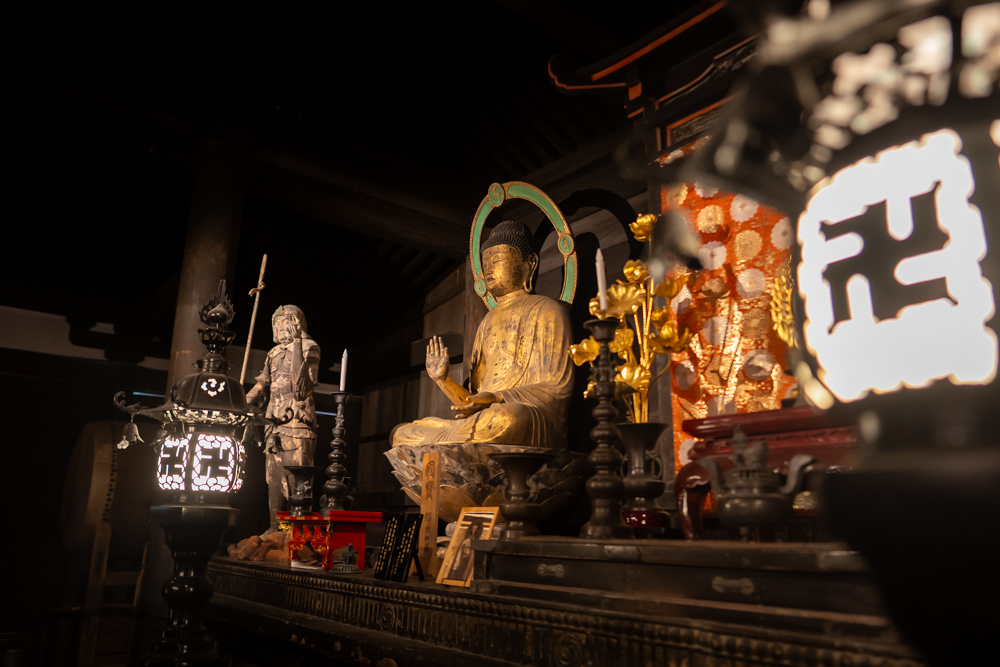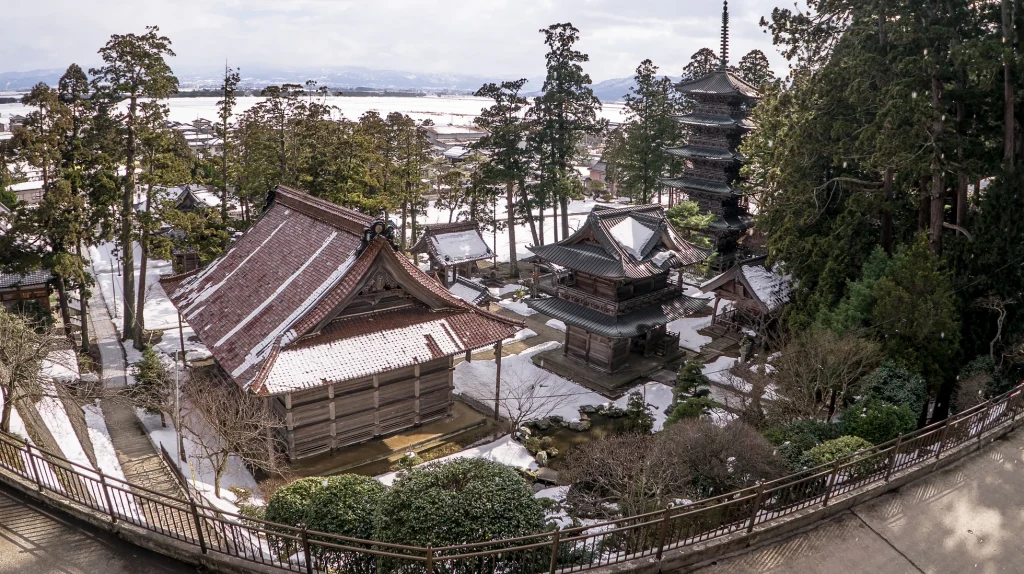
Yamagata Prefecture
A New Year's fire festival held at the top of Mt. Haguro.
The Shoreisai Festival is one of Japan’s oldest, and coolest, New Year’s fire festivals! It has been taking place on New Year’s Eve nearly every year for over a millennium at the top of Mt. Haguro of the Dewa Sanzan.
The Shoreisai Festival is run in conjunction with the conclusion of the Winter Peak Ritual (Fuyu-no-mine-iri), in which two Yamabushi from the town, named Matsuhijiri, pray for a bountiful harvest and prosperity over the course of 100 days.
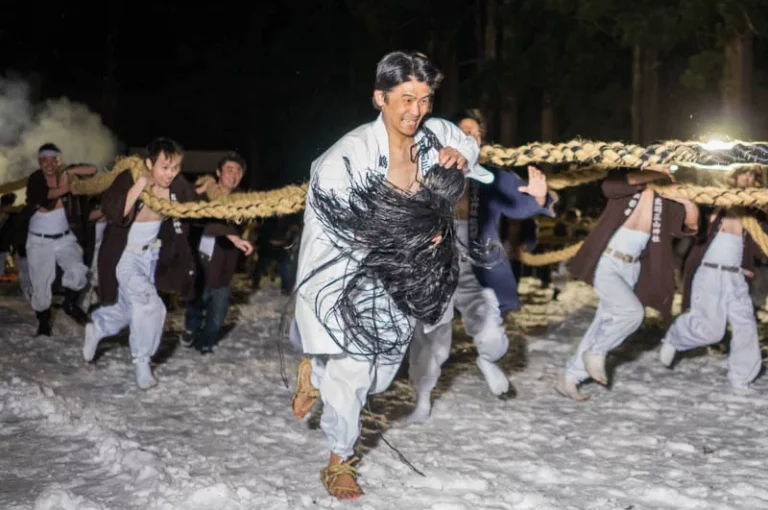
Quick Info
Cost
Free.
If you come by car there is a 400 yen toll road you must take.
Opening Hours
The Shoreisai Festival is a single day event held on December 31st.
The slaying of the Soranki Demon takes place at 3pm and the Otaimatsu-hiki Ritual is held from 10:45pm.
Both events take place at the Sanjingosaiden Shrine on top of Mt. Haguro.
Average Duration
1 – 2 hours
Address
Touge-7 Haguromachi Touge, Tsuruoka-shi, Yamagata-ken 997-0211
Other tips
As this event takes place in the mountains at the end of December it will be cold!
Be prepared for heavy snow and sub zero temperatures. Boots and heavy jackets are a must.
The Origins of the Shoreisai Festival
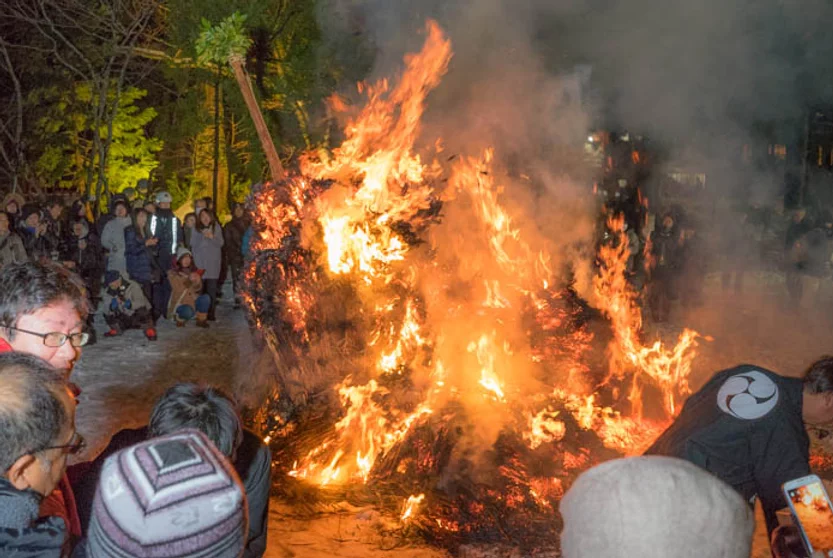
Legend has it that 1300 years ago a fiery demon called Soranki sent down flames from the sky and started wreaking havoc on the towns, causing crops to spoil and the townspeople to suffer immensely with many becoming sick and dying.
The townspeople tried everything they could to stop him, and eventually the founder of the Dewa Sanzan, Prince Hachiko, decided to create an effigy of Soranki so they could burn it down. After doing this, the demon thankfully disappeared and the townspeople had won. Thus started the Shoreisai Festival.
Slaying Soranki
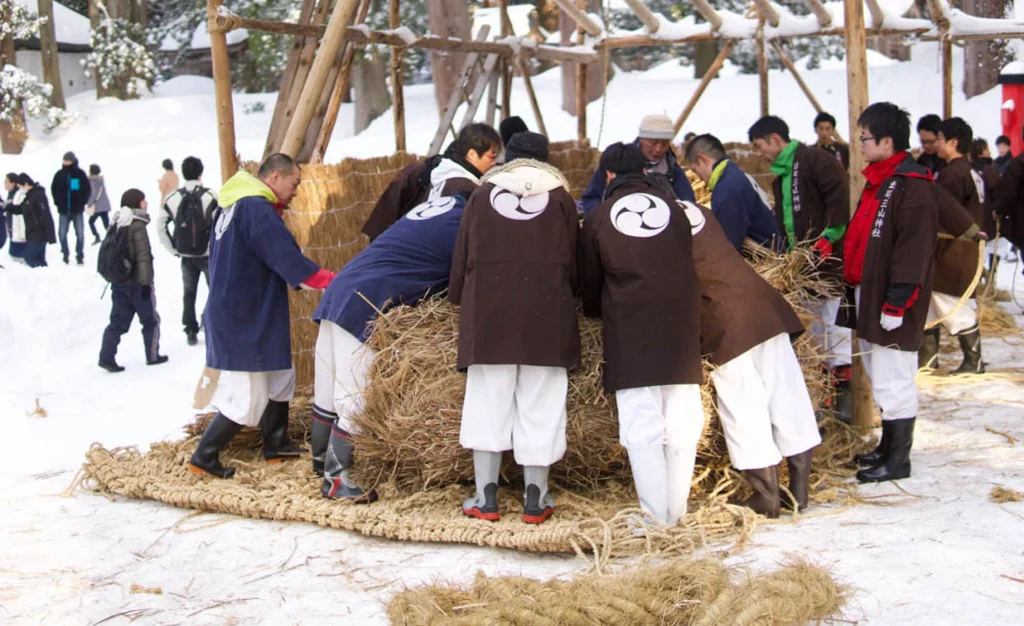
At 3pm there is a ritual called Tsunamaki in which the straw effigy of Soranki is symbolically sliced dead. Here the straw Soranki is split into two giant mounds, one for each Matsuhijiri, and then some of the rope that made up Soranki is further cut into pieces about 50cm long that symbolise harvest mites. The Matsuhijiri then throw the harvest mites into the crowd. Be careful here as it can get violent! If you do manage to catch one, ask them to tie it so that it can be placed at the entrance to your house and used to ward off demons. If you didn’t catch one, don’t despair! You still have a chance by Sumo wrestling for one!
Soranki Reborn
Soranki isn’t any ordinary demon, however. Even after being slayed, it is said that Soranki comes back to life after darkness falls. At 6pm, Soranki is “reborn”, where two groups representing each Matsuhijiri; the Sendo group, and the Ijo group, race against each other to remake two straw demons called Otaimatsu.
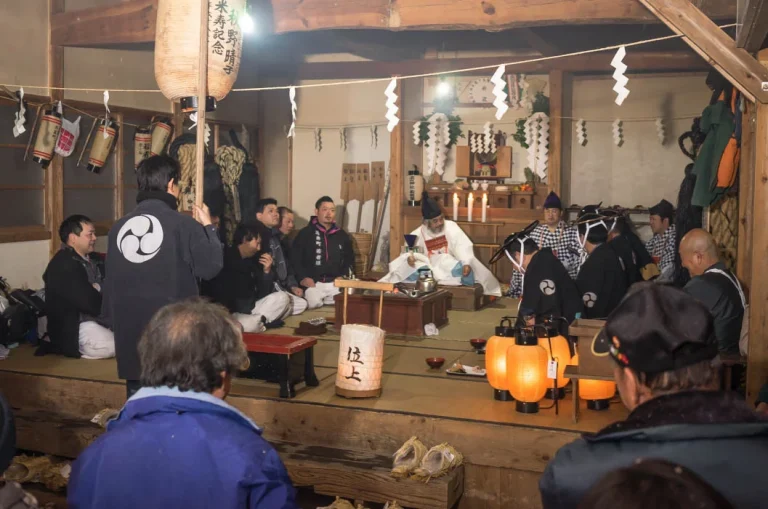
At 7pm it is time for the leaders’ debate. At the Shitsuraeya, the building across from the Dewa Sanzan Historical Museum, the leaders of the local townships have a sake-fuelled debate over who is most worthy to pull the Otaimatsu on each of the four ropes. Anyone is allowed to enter this building and talk freely to the Matsuhijiri and other townspeople, and free-flowing sake and rice-balls are also available free of charge.

Pulling the Otaimatsu
Then, at around 10:45pm, things really start heating up. In the Otaimatsu-hiki ritual, the Sendo team and Ijo team ready their ropes at the open field across from the Sanjingosaiden Shrine. At the end of the field are two wooden poles with pine leaves attached to the top; one for each team. The Sendo team lines up closest to the shrine, with the Ijo team next to them. Then the Otaimatsu are set alight. The members from each team wait until the Horagai conch plays before they begin running, and it is a competition to see who can burn their pole better and faster.
Both wooden poles represent something different. The pole for the Sendo team represents the catch of fish, and the Ijo team the harvest. So, if the Sendo team wins, it will be a good year for fisheries, and if the Ijo team wins, it will be a good year for harvest.
If they are not quick enough, or if they run the wrong way, the effigy will become engulfed in flames and will be impossible to lift.
Onlookers will want to be sure to stand back as it can get very smoky, and embers can fly out unexpectedly.
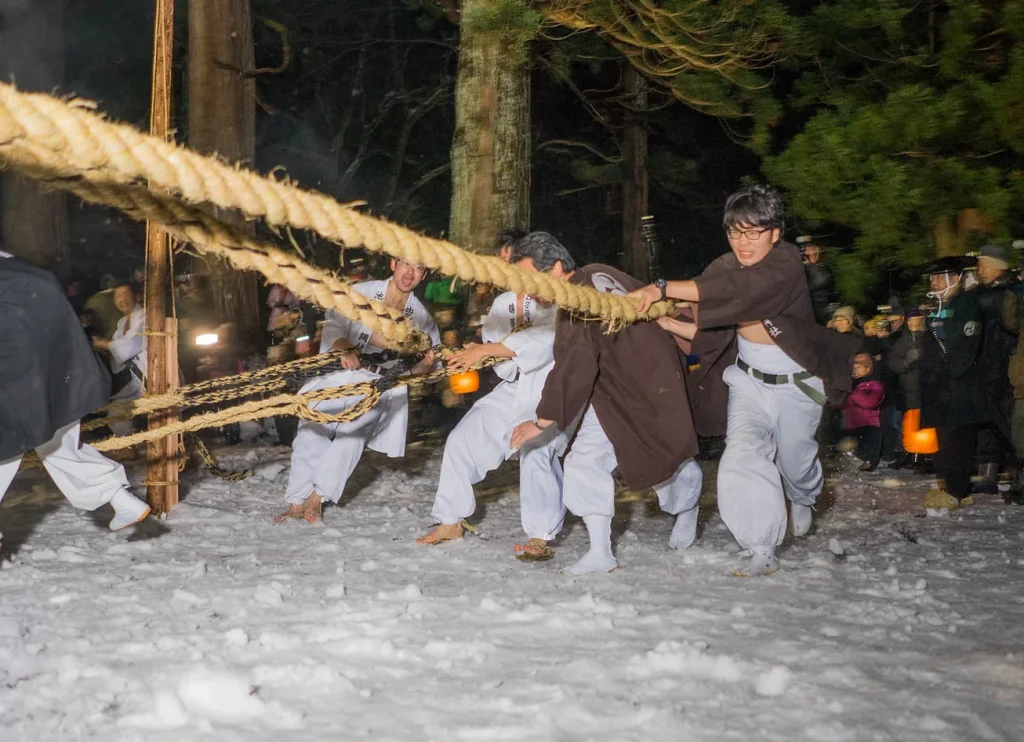
Originally known as Niomon, the gate of dual deities, until the separation of Shintoism and Buddhism in the Meiji era, Zuishinmon is the impressive gate that welcomes all into the sacred Mt. Haguro. The statues of Nio that were in the gate are now enshrined in Shozen’in Koganedo at the foot of the mountain, and the current gatekeepers are the two deities Raijin and Fujin, the god of thunder and wind respectively.
In front of the gate is the Tenpaiseki, a stone that was originally placed in the middle of the Tenpai-zaka, the slope on the road along the row of Shukubo lodges. The Tenpaiseki was pulled by rope into its current location before the road was paved in 1940.
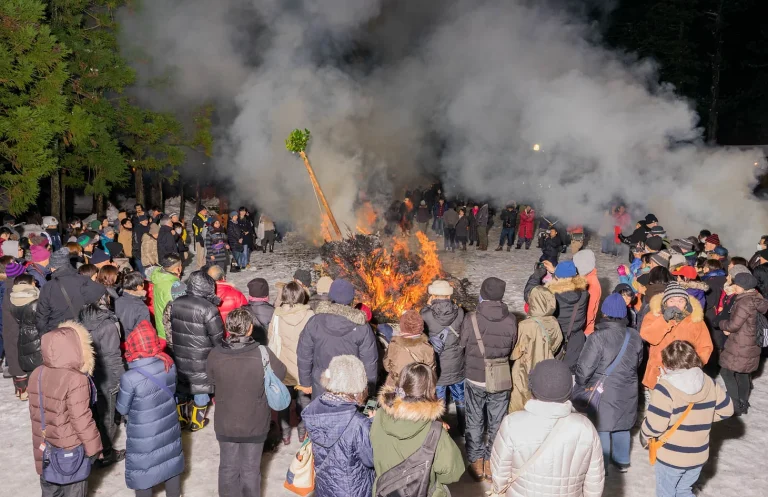
Once both effigies have been hoisted and secured, onlookers are able to gather around and see the final moments of Soranki as he dies in a pile of embers and ash; a beautiful end to this ancient festival.
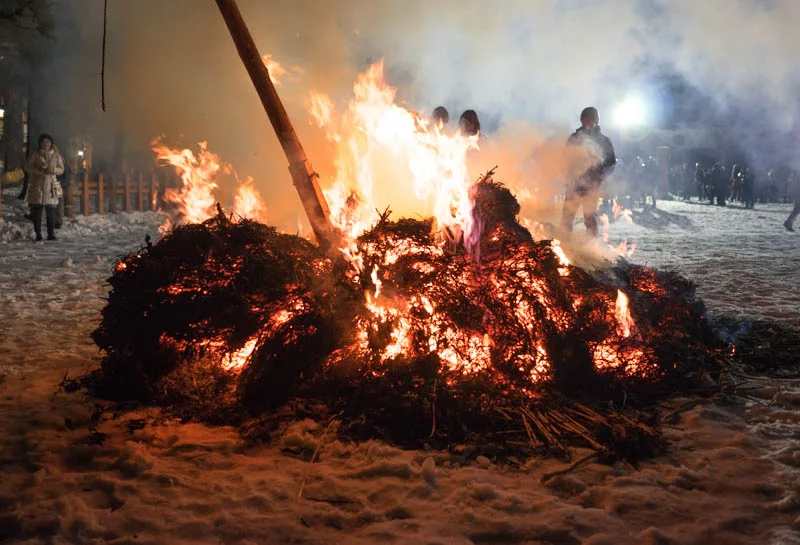
Hatsumode: First Shrine Visit of the Year
As the end of this festival also coincides with the start of the new year, why not take part in another Japanese tradition, Hatsumode?
In Hatsumode, people across Japan stay awake until midnight and then travel to a Shrine to pray for a great year.
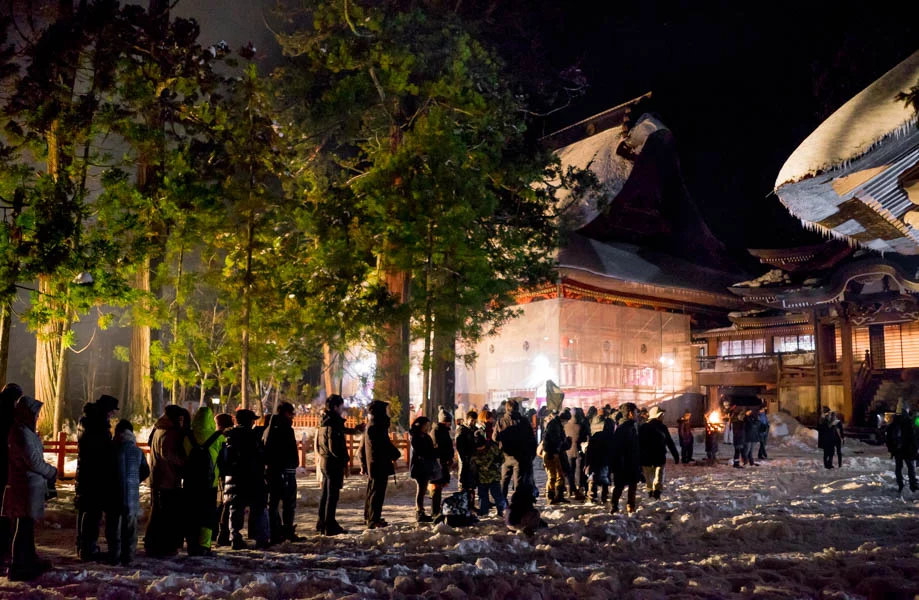
Access
The first part of the Shoreisai Festival starts at 3pm on the top of Mt. Haguro at the Sanjingosaiden Shrine.
Note that the main event of this festival starts at 11pm in the same location.
You may drive to the top of Mt. Haguro and park next to the shrine, or you may also climb up Mt. Haguro from the base if you are experienced in the snow. If you do so, use this address: Touge-7 Haguromachi Touge, Tsuruoka-shi, Yamagata-ken 997-0211
